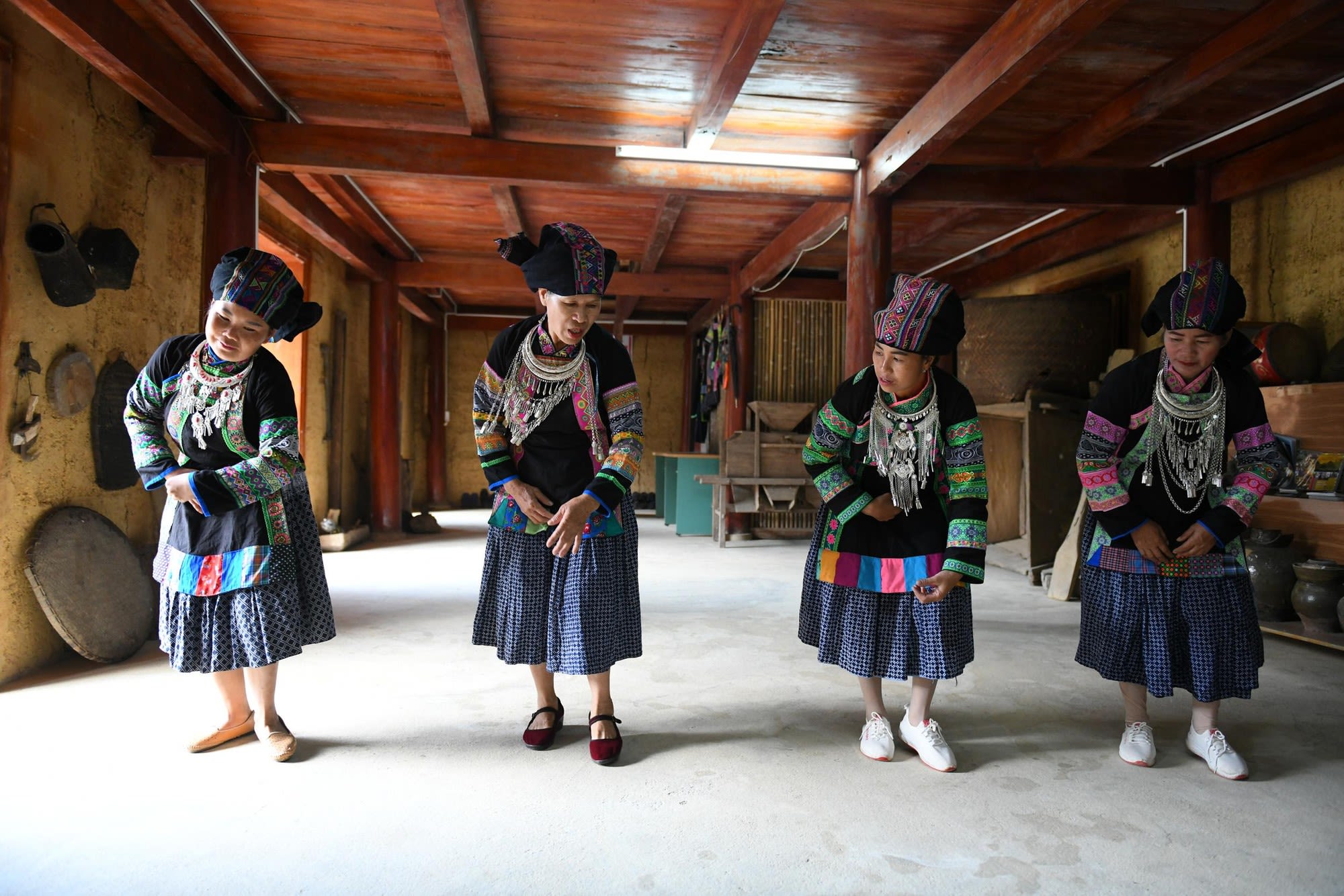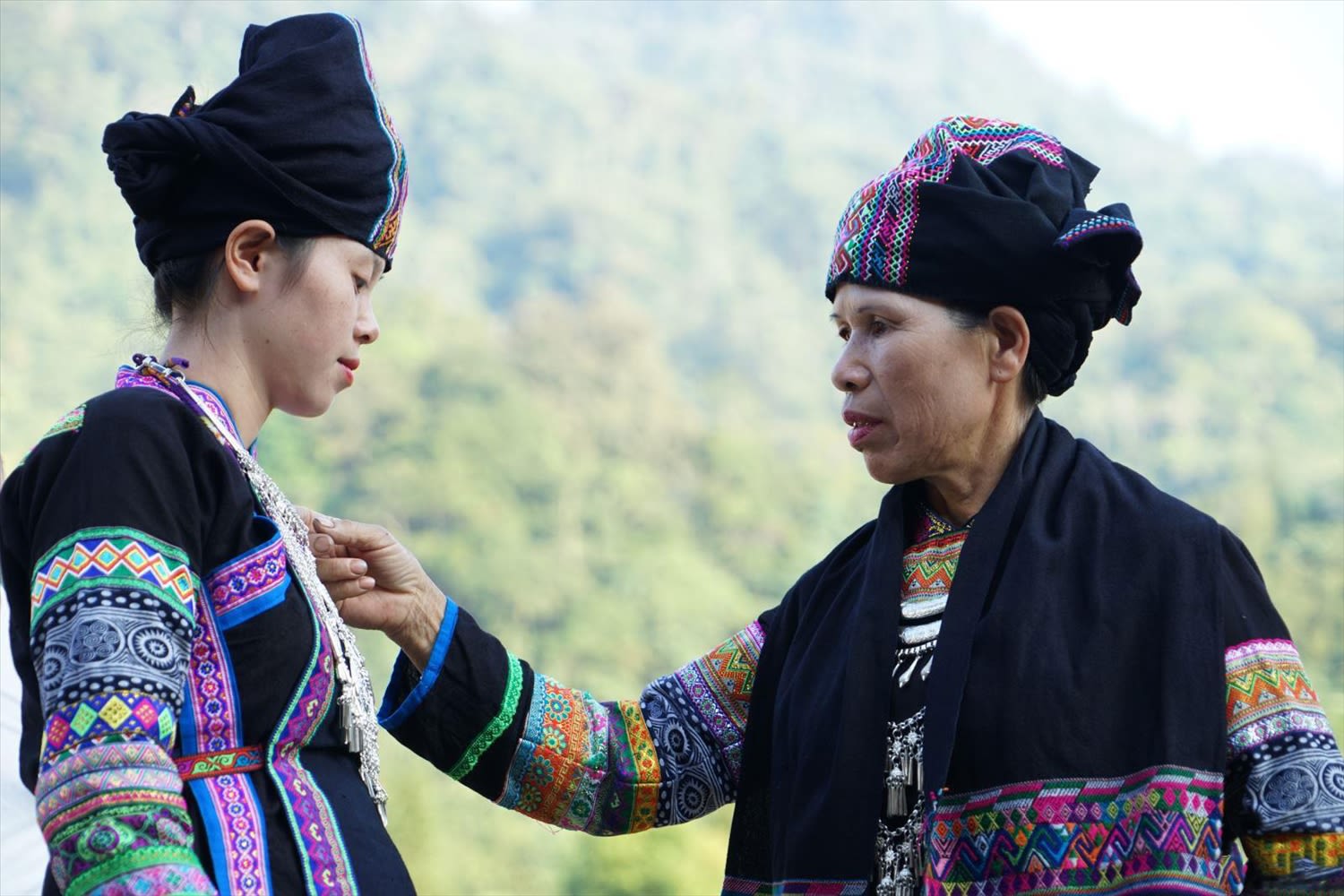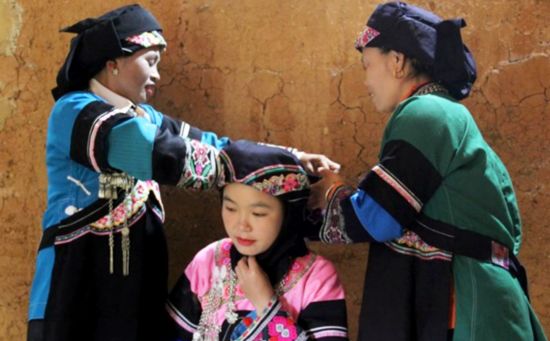
Other names: Bo Y group (in Ha Giang Province), Tu Di group (in Lao Cai Province)
Language: Tay-Thai branch of Tai-Kadai family (Bo Y group), Chinese language of Sino-Tibetan family (Tu Di group)
Residence: People of the Bo Y group in Ha Giang Province live in some communes in Dong Van and Quan Ba Districts.
History: The ancestors of the Bo Y people developed from a branch of the Lac Viet people. The Bo Y people call themselves Bo Y, Bo Trong, Bo Mai, Lieu, Trong Gia, Ly Lieu and Di Lieu (possibly from ancient times).
Bo Y is one of the 16 ethnic groups with the smallest populations among the 54 ethnic groups in Vietnam. To date, the Bo Y people have retained their cultural identity and fine traditions.
Origin
The ancestors of the Bo Y people developed from a branch of the Lac Viet people. The Bo Y people call themselves Bo Y, Bo Trong, Bo Mai, Lieu, Trong Gia, Ly Lieu and Di Lieu (possibly from ancient times).
Bo Y currently refers to two groups: the Bo Y (Pu Y) group in Ha Giang Province and the Tu Di group in Lao Cai Province.
Geographical distribution
People of the Bo Y group in Ha Giang Province live in some communes in Dong Van and Quan Ba Districts.

Population
According to a survey of 53 ethnic minority groups in 2019, the Bo Y ethnic group has a population of 3,232, including 1,695 men and 1,537 women.

Languages
Tay-Thai branch of Tai-Kadai family (Bo Y group), Chinese language of Sino-Tibetan family (Tu Di group)
Education: According to a survey of 53 ethnic minority groups in 2019, the rate of literacy among those aged 15 and above is 80.0%, the primary school attendance rate is 100.6%, the secondary school attendance rate is 96.1%, and the high school attendance rate is 72.6%. The rate of children not attending school is 7.8%.

Main features
Traditional social institution: Under the feudal system, the Bo Y people had a low social status and were ruled by an apparatus of the Nung people. Under French rule, Quan Ba had two administrative units: Dai Mien and Tieu Mien. The region where the Bo Y people lived belonged to Tieu Mien, whose town was ruled by the Tay, H’mong and Dao people. Underneath were villages headed by shamans who could read Chinese characters and were well-versed in the local customs and practices.
Religion and belief: The Bo Y people believe that the universe has three layers. In the middle is the human world, above them is the world of gods and spirits and below them is the village of tiny people living underground.
Housing: As wet-rice farmers, the Bo Y people in Quan Ba usually choose to build their houses near water sources, to make it convenient for living and cultivating. Before building a house, the Bo Y people will choose a flat piece of land covering about 40-50 square metres. Then they conduct a rite of offering to the god of earth to pray that the house to be built will stand firm, and members in the family will be in good health and their business will thrive.
Costumes: Men usually wear four-piece shirts with collars, made from indigo-dyed fabric woven by hand. Women wear five-piece shirts, with armpit, neck, and sleeve slits and; the edges are decorated with colourful patterns. In the past, the Bo Y people’s jewelleries also included silver carvings but it was not very common.
Food: The Bo Y people’s economy is primarily subsistence farming. Rice is the staple food, while maize is used as goods for exchange and food for animals.
Economic conditions:
The Bo Y people have the tradition of wet-field farming and have a high level of agriculture. Currently, forests are assigned to the Bo Y people for care and protection, so they no longer rely on extensive farming but have shifted to intensive farming and companion planting. Besides rice, maize and cassava, the Bo Y people in Muong Khuong (Lao Cai), also grow chilli, soybean, tea, tobacco and sugarcane. Chilli is a favourite spice of the Bo Y people and is also a type of commercial goods.
Animal husbandry is a complimentary livelihood to cultivation. The Bo Y people raise many poultries, especially chickens. Chicken is an indispensable offering during major festivals and meets the food needs requirements of Bo Y families. Poultry farming is mainly in the form of grazing.